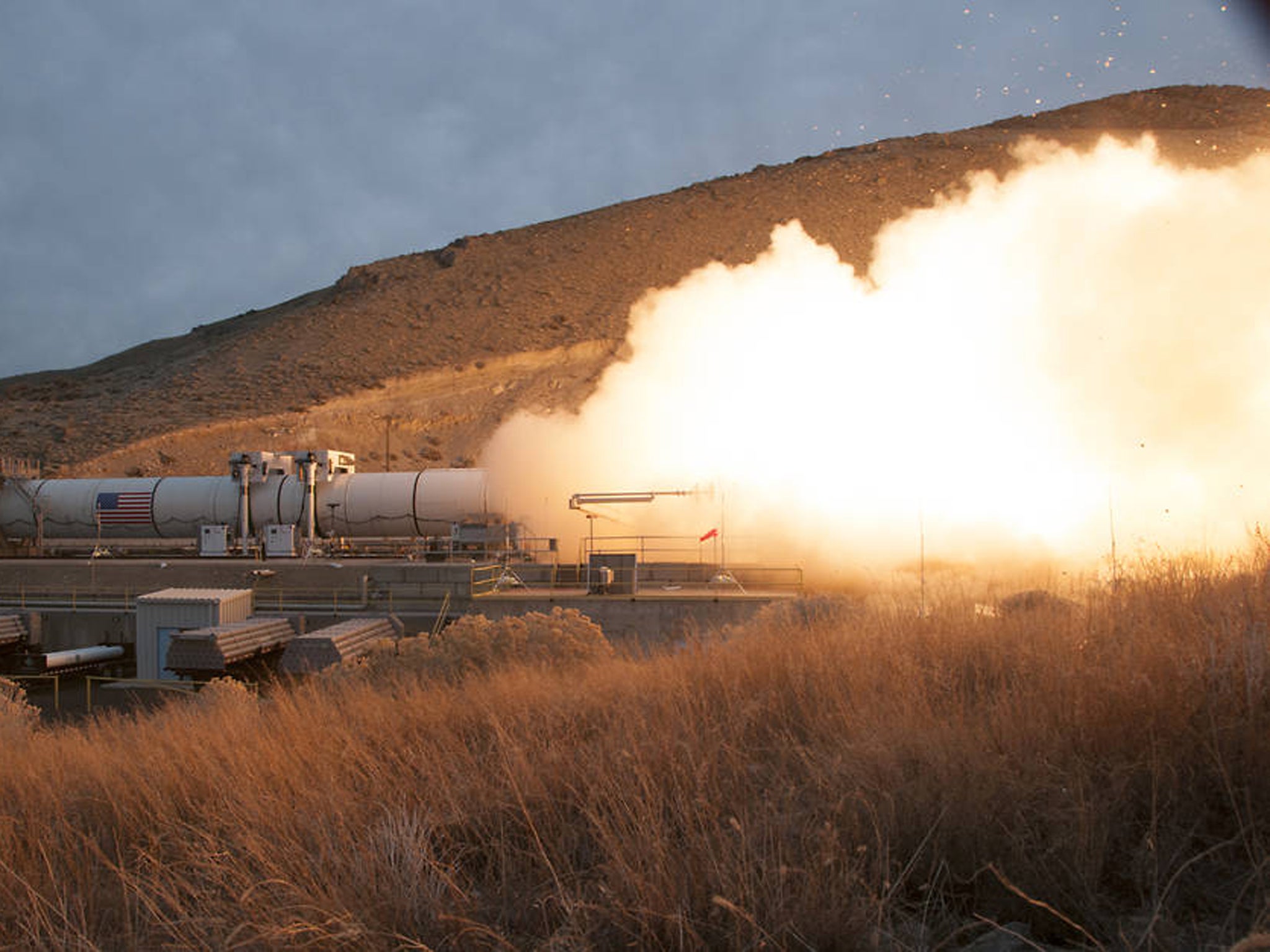Nasa tests most powerful rocket ever made, success gives hope for Mars journey
Rocket generates about 3.6 million pounds of thrust, many times that of a jet engine

Your support helps us to tell the story
From reproductive rights to climate change to Big Tech, The Independent is on the ground when the story is developing. Whether it's investigating the financials of Elon Musk's pro-Trump PAC or producing our latest documentary, 'The A Word', which shines a light on the American women fighting for reproductive rights, we know how important it is to parse out the facts from the messaging.
At such a critical moment in US history, we need reporters on the ground. Your donation allows us to keep sending journalists to speak to both sides of the story.
The Independent is trusted by Americans across the entire political spectrum. And unlike many other quality news outlets, we choose not to lock Americans out of our reporting and analysis with paywalls. We believe quality journalism should be available to everyone, paid for by those who can afford it.
Your support makes all the difference.Nasa has successfully tested the most powerful rocket ever made, which it hopes will one day carry humans to Mars and onto an asteroid.
The Space Launch System (SLS) represents the first time in decades that Nasa has made a rocket anything like as powerful. It was successfully fired lying down in the Utah desert, the first of two tests before it is sent off to Nasa’s Kennedy Space Centre for its first flight.
But it’s unclear whether the rocket will ever be able to make it into space. With limited funding from the American government, the future of Mars and other missions are unclear — even though it will have the most advanced and powerful rockets and systems for sending people to space, Nasa might not be able to pay for it to actually undertake its journey.
But Nasa was optimistic yesterday that the exploration will go ahead.
"The work being done around the country today to build SLS is laying a solid foundation for future exploration missions, and these missions will enable us to pioneer far into the solar system," said William Gerstenmaier, Nasa’s associate administrator for human exploration and operations. "The teams are doing tremendous work to develop what will be a national asset for human exploration and potential science missions."
The test saw the rocket booster fired for two minutes, the same time it will be switched on for as it lifts the SLS off its launch pad. Nasa staff used 531 sensors to measure important things like thrust, pressure and whether new upgrades to the booster worked properly.
In advance of the firing, the booster was warmed up to 90 degrees Fahrenheit — which is as hot as the propellant that fuels it can be at launch. The next test will see the booster cooled down to the bottom end of the range and then fired, which Nasa hopes to do in early 2016.
If that test is successful, the agency will then ship off the booster to the Kenneedy Space Station, ready for future deep space missions. When it gets there, it will first be tested using the Orion spacecraft that will carry humans to Mars.
Eventually, Nasa hopes that two of the boosters will carry the SLS on its way into space. The thrust that it will provide — 75 per cent of that needed to escape the Earth’s atmosphere — will mean that the rocket will be able to travel further into the solar system than humans have ever gone before.
Join our commenting forum
Join thought-provoking conversations, follow other Independent readers and see their replies
Comments